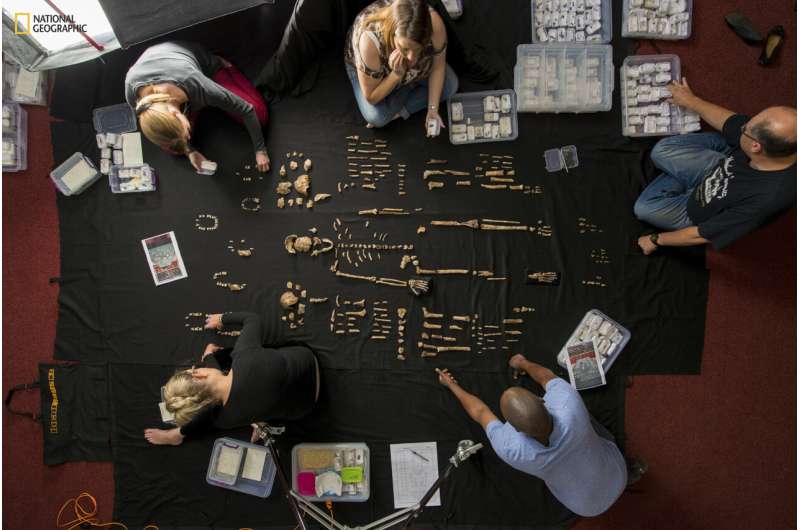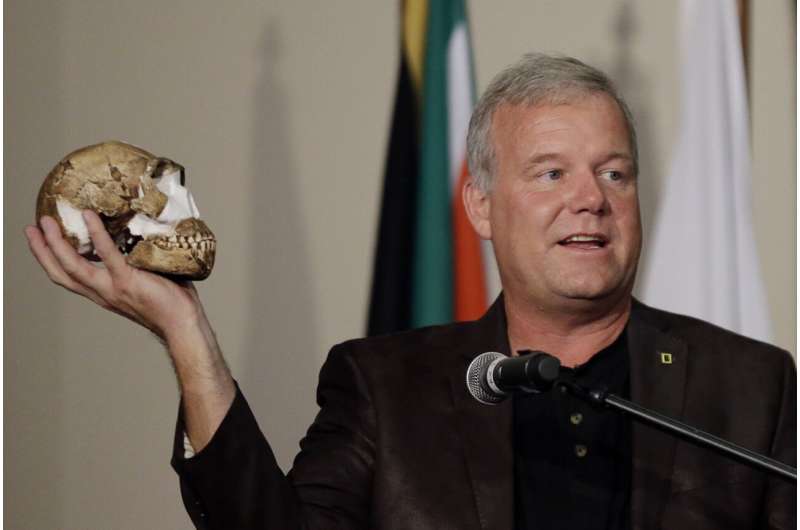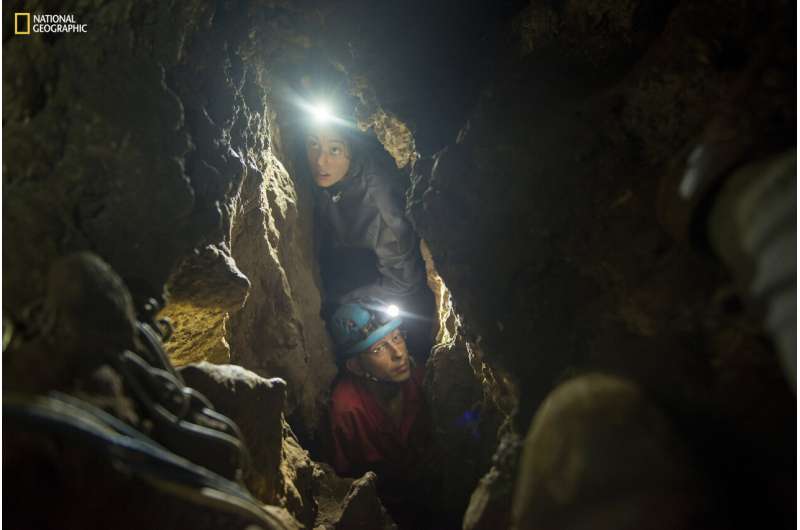This article has been reviewed according to Science X's editorial process and policies. Editors have highlighted the following attributes while ensuring the content's credibility:
fact-checked
preprint
reputable news agency
proofread
Small-brained ancient human cousins may have buried their dead, according to a surprising study

An ancient human cousin may have buried its dead and carved symbols into cave walls, surprising findings for a creature with a small brain.
Fossil remains of the species—named Homo naledi—were uncovered in underground caves in South Africa a decade ago. Now, researchers say they've found evidence that the species was capable of complex behavior that so far has only been seen in those with bigger brains.
"We are facing a remarkable discovery here" for a species with brains one-third the size of humans, said anthropologist Lee Berger, who led the research funded by the National Geographic Society, where he now works.
Berger and colleagues describe their findings in studies posted online Monday. The research has not been peer-reviewed yet and some outside scientists think more evidence is needed to challenge what we know about how humans evolved their complex thinking.
"There's still a lot to uncover," said Rick Potts, director of the Smithsonian's Human Origins Program who was not involved in the research.
H. naledi is a pretty new addition to the family tree of hominins, which includes our direct ancestors and other extinct relatives who walked on two legs. Berger and his team announced the species in 2015, after a tip from local spelunkers led them to the Rising Star cave system near Johannesburg where they uncovered fossils from at least 15 individuals who lived around 300,000 years ago.

These creatures had some traits in common with modern humans, like legs made for walking upright and hands that could work with objects, said University of Wisconsin-Madison anthropologist John Hawks, a member of the research team. But other features looked more ancient, including their small brains.
In recent years, team members have ventured back into the caves, a tricky descent through tight underground spaces. What's down there shows the species in a new light, they reported.
One of the new studies describes what researchers say were intentional burial sites. The team uncovered fossil remains of adults and children in shallow holes in the ground, their bodies in a fetal position.
Another study describes a series of marks carved into the cave walls, including geometric patterns and cross-hatched lines.
"This is something that takes a lot of time and effort to do," said Berger, who led the initial research while at the University of the Witwatersrand in Johannesburg.
All of this behavior would be surprising for a creature whose brain was closer in size to an ape's than a human's, experts said.

Decades ago, we thought Homo sapiens were the only ones who could figure out how to use fire, bury their dead or create art, said Chris Stringer, a human evolution expert at London's Natural History Museum who was not involved in the research.
Since then, we've learned that other groups like Neanderthals also lived complex lives. But those species still had big brains—unlike H. naledi, whose burials would raise further questions about human evolution, Stringer said.
Scientists haven't yet been able to identify how old the engravings are. So Potts said the current evidence can't say for sure whether H. naledi was truly the one to create the symbols, or if some other creature—maybe even H. sapiens—made its way down there at some point.
For study author Agustin Fuentes, an anthropologist at Princeton University, the H. naledi evidence takes the focus off brain size.
"Big brains are still important," Fuentes said. "They just don't explain what we thought they explained."
More information: Lee R Berger et al, 241,000 to 335,000 Years Old Rock Engravings Made by Homo naledi in the Rising Star Cave system, South Africa., bioRxiv (2023). DOI: 10.1101/2023.06.01.543133 , www.biorxiv.org/content/10.110 … /2023.06.01.543133v1
Lee R Berger et al, Evidence for deliberate burial of the dead by Homo naledi, bioRxiv (2023). DOI: 10.1101/2023.06.01.543127 , www.biorxiv.org/content/10.110 … /2023.06.01.543127v1
Journal information: bioRxiv
© 2023 The Associated Press. All rights reserved. This material may not be published, broadcast, rewritten or redistributed without permission.





















